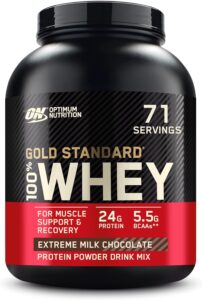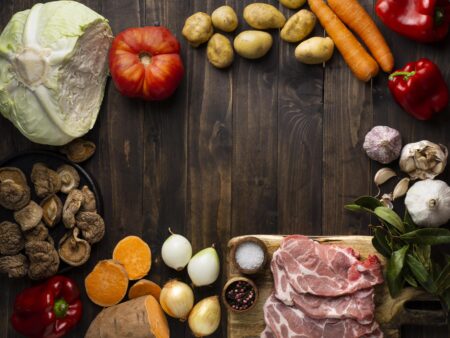
A gluten-free diet excludes gluten, a protein found in wheat, barley, and rye. Initially designed for individuals with celiac disease, a condition where gluten causes severe immune reactions and damage to the small intestine, the diet has gained popularity among those without the disease. Many people now turn to a gluten-free lifestyle for weight management, health benefits, and perceived wellness improvements. This article delves into how a gluten-free diet works for weight loss, its health benefits, advantages, disadvantages, risks, pricing, and provides sample meal ideas.
How the Gluten-Free Diet Works for Weight Loss
1. Reduction of Processed Foods: A gluten-free diet often involves avoiding processed foods that contain gluten, which may lead to a reduction in calorie intake. Many gluten-containing products are high in sugars, fats, and calories.
2. Increased Awareness of Food Choices: Individuals following a gluten-free diet may become more conscious of their food choices, opting for whole, unprocessed foods like fruits, vegetables, lean proteins, and gluten-free grains.
3. Inclusion of Whole Foods: Foods like quinoa, rice, and gluten-free oats are naturally lower in calories and higher in fibre compared to many processed gluten-containing foods, which can contribute to weight loss.
4. Potential Reduction in Bloating: Some people may experience weight loss due to reduced bloating and inflammation when removing gluten from their diet, particularly if they have a sensitivity to gluten.
Health Benefits
1. Improved Digestive Health: For individuals with celiac disease or gluten sensitivity, a gluten-free diet can alleviate symptoms like diarrhoea, abdominal pain, and bloating. It promotes healing of the small intestine.
2. Reduced Risk of Chronic Diseases: Eliminating gluten may reduce inflammation in those with gluten-related disorders, potentially lowering the risk of chronic diseases such as diabetes and heart disease.
3. Enhanced Energy Levels: Some people report increased energy levels and reduced fatigue after adopting a gluten-free diet, particularly if they were previously suffering from undiagnosed gluten sensitivity.
4. Better Nutrient Absorption: For those with celiac disease, removing gluten allows for improved absorption of essential nutrients that were previously blocked by gluten-induced damage.
Advantages
1. Improved Symptoms for Gluten-Sensitive Individuals: Those with celiac disease or non-celiac gluten sensitivity often experience significant symptom relief and improved quality of life.
2. Increased Awareness of Food Labels: Following a gluten-free diet fosters a greater understanding of food labels and ingredients, which can lead to healthier eating habits.
3. Potential for Weight Loss: As mentioned, many people may lose weight due to reduced intake of processed foods and increased consumption of whole foods.
4. Support for Health Conditions: Some individuals with autoimmune conditions or digestive issues report feeling better on a gluten-free diet.
Disadvantages
1. Nutrient Deficiencies: A gluten-free diet can lead to deficiencies in essential nutrients such as fibre, B vitamins, iron, and calcium if not carefully planned. Gluten-free grains can sometimes be less fortified than their gluten-containing counterparts.
2. Cost: Gluten-free products are often more expensive than their gluten-containing equivalents. This can lead to higher grocery bills for individuals following this diet.
3. Social and Eating Out Challenges: Navigating social events and restaurants can be challenging, as gluten-free options are not always readily available.
4. Risk of Processed Gluten-Free Foods: Some gluten-free processed foods can be high in sugar, fat, and calories, potentially negating some health benefits.
Pricing
– Gluten-Free Products: Generally, gluten-free products such as bread, pasta, and snacks are more expensive than their gluten-containing counterparts. Prices can vary, but gluten-free bread, for instance, might cost 50-100% more than regular bread.
– Whole Foods: While gluten-free whole foods like fruits, vegetables, and meats are not inherently more expensive, the overall cost of a gluten-free diet can increase due to the need for specialized products and potential supplementation.
– Supplementation: Depending on individual nutritional needs, supplementation (e.g., with vitamins and minerals) might be necessary, adding to the overall cost.
Sample Meals for a Gluten-Free Diet
1. Breakfast:
– Quinoa Porridge: Cooked quinoa, a naturally gluten-free grain, is combined with almond milk to create a creamy base. Topping it with fresh berries adds natural sweetness and antioxidants, while nuts provide healthy fats and protein. A drizzle of honey enhances the flavour and adds a touch of sweetness.
– Smoothie: A nutritious blend of spinach, banana, almond butter, chia seeds, and almond milk. Spinach offers vitamins and minerals, banana adds natural sweetness and potassium, almond butter provides protein and healthy fats, chia seeds contribute fibre and omega-3 fatty acids, and almond milk serves as a dairy-free liquid base.
2. Lunch:
– Grilled Chicken Salad: This meal includes mixed greens, which are rich in vitamins and minerals, combined with grilled chicken for lean protein. Avocado adds healthy fats, while cherry tomatoes and cucumbers provide freshness and additional nutrients. A balsamic vinaigrette ties the flavours together while adding a tangy taste.
– Rice Bowl: A hearty bowl of brown rice, which is a good source of fibre and essential minerals, is paired with black beans for protein and fibre. Roasted vegetables, such as bell peppers and zucchini, contribute vitamins and antioxidants, and a squeeze of lime adds a zesty flavour.
3. Dinner:
– Baked Salmon: Salmon is seasoned with lemon and herbs and baked to preserve its healthy fats and protein content. It’s served with steamed broccoli, which provides vitamins and fibre, and a sweet potato mash, offering complex carbohydrates and additional nutrients.
– Stuffed Bell Peppers: Bell peppers are filled with a mixture of ground turkey, quinoa, and vegetables. This dish is topped with gluten-free cheese for added flavour. It combines lean protein, gluten-free grains, and a variety of vegetables for a balanced meal.
4. Snacks:
– Hummus and Veggies: Fresh vegetable sticks, such as carrots and celery, are paired with hummus, which is made from chickpeas and provides protein and healthy fats. This snack is both nutritious and satisfying.
– Fruit and Nuts: A small handful of almonds provides protein and healthy fats, while pairing it with an apple or pear offers a serving of fruit and additional fibre. This combination makes for a balanced, energy-boosting snack.
A gluten-free diet provides substantial benefits for individuals with gluten-related disorders, such as celiac disease and non-celiac gluten sensitivity. For these individuals, eliminating gluten from their diet can lead to significant symptom relief and improved quality of life. Additionally, the diet may support overall health improvements, including better digestive health and reduced inflammation, and can assist with weight management by encouraging a focus on whole, unprocessed foods. However, the gluten-free diet presents several challenges. Nutrient deficiencies can arise if the diet is not well-balanced, as gluten-free alternatives often lack essential nutrients like fibre, iron, and B vitamins found in whole grains. Moreover, gluten-free products can be more expensive than their gluten-containing counterparts, which can strain a household’s budget.
To address these challenges, careful planning is crucial. Emphasizing whole, naturally gluten-free foods such as fruits, vegetables, lean proteins, and gluten-free grains can help ensure nutritional adequacy while controlling costs. Before adopting a gluten-free diet, consulting with a healthcare provider is essential. They can help determine whether the diet is appropriate for one’s health needs, assist in planning a balanced and nutritious diet, and monitor for any potential deficiencies or other issues.










